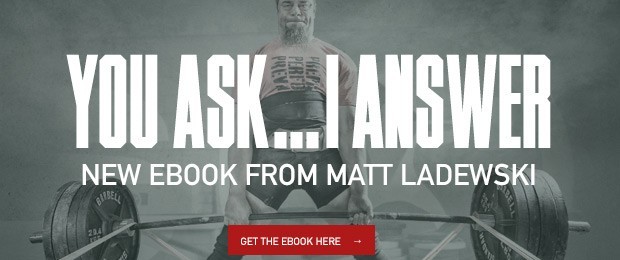
As a strength coach, I hate cookie-cutter approaches. In my mind – and in my programming – no two individuals are the same, and therefore no two individuals should be treated the same. However, there are some exceptions, and one of those deals with the power of momentum.
With every athlete I coach, I stress the importance of building momentum into our programming. You know the saying, “great athletes have short memories”? That refers to the importance of being able to forget both the bad and good workouts and focus solely on the task at hand, regardless of external circumstances. And, while it sounds great in theory, I find that it’s extraordinarily hard for most individuals to avoid the bias that comes from self-evaluation.
So, I really strive to make that whole process unnecessary, by programming around the idea of building momentum. That means avoiding, as much as possible, extreme lows (injury, missed lifts) and extreme highs (so no PRs in the middle of a training cycle). Of course, it’s impossible to completely eliminate good and bad workouts, but there are some strategies that both coaches and athletes can employ to build momentum over the long run.
- Under-Promise, Over-Deliver.This one is crucial, because it deals with managing expectations. I’ve written before about one of the big drawbacks of training using RPEs: it’s very difficult to avoid setting expectations prior to a training session, and if you do so, you will inevitably compare your actual effort in the gym to your ideal numbers – which throws off the whole system.
So, instead, I program for many of my advanced athletes using both RPEs and specific load ranges. The low end of the load ranges set minimum expectations for the session – numbers I believe an individual can hit under almost any circumstance (barring Coronavirus or some shit like that). Then, if they feel good, they can push a little harder according to the high end of the load ranges – but not so hard that they end up overreaching. Combined with the RPEs, this method ensures “good” training sessions the vast majority of the time.
- Small Wins.This point is a close second to the first – no one wants to be bored during training. I program to allow for small wins – rep or movement variation PRs, for example; or “free time,” to allow an athlete to goof off a little with pinkie-up curls or whatever – almost every training week. This way, lifters stay mentally engaged and it becomes easier to avoid the temptation of going for that 50-pound PR a month out from a meet.
- Still Shoot for the Moon.Just because we’re trying to minimize highs and lows in the short term, we still set grand goals for the long term, so that training motivation is always high. I’m lucky in this regard: I’m able to choose the athletes I want to work with, so that intrinsic motivation is there from day one. We use goal-setting strategies to help make that motivation more tangible, but there’s not a lot I have to do on my end to fire up the lifters I coach.
Again, remember: it's impossible to completely eliminate self-evaluation and bad workouts. These things happen; they're part of the reason why training is both a science and an art. But the more you can incorporate safeguards in your programming, the better off you'll be in the long run!
You can contact Ben for 1:1 coaching at ben@peakhd.net.









